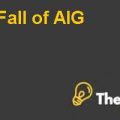1. Case Summary
The case study is based on Riverside District Memorial Hospital, commonly known as RDMH. The hospital is located in a rural area and it was also not for profit business. Because of its non-profit nature, the management at RDMH needed to get everything done within the operational budget provided by the municipal government. The budget was given and approved by the Ministry of long-term care and the health care department of the Canadian province. The case is based on the issues related to the safety of patients in terms of providing proper medication in terms of both administration and pharmacists side. In addition to this, the case is also based on challenges faced by Jordon, who is a Vice President of patient services and chief nursing executive. The VP of the hospital needs to make sure the appropriate level of safety to be implemented everywhere, especially in terms of patients. Various cases of patient’s death have been identified, and the root cause behind that was the lack of safety measures from the administration and physicians side. Wrong medications and dosage were given to the patients that in turn created side effects and ultimately led towards patient’s death. The Vice President of the department considered several options that included education awareness program, medication management, incident management, patient identifier program and infection avoidance in critical care. In addition to this, the hospital had introduced five rights that would be practiced every time a patient received medication, these included the patent right, the right medication, the right dose, right route and the right time. Out of all the options available to the hospital, the management first needed to implement medication dispensing system along with BCMAS implementation.
2. Analysis
a) Who are the key stakeholders in medication management at RDMH? What are the significant concerns of these stakeholders?
One of the major stakeholders in the Riverside Hospital are the pharmacists. As the hospital is providing pharmacy services to the rural areas, pharmacists play an important role among all the stakeholders. As the hospital is not for profit business, therefore, RDMH is unable to afford a full-time pharmacist, and since it is only a 62-bed hospital, there isn’t enough work to justify a full-time pharmacy position. This factor has created several pharmacy related issues in the organization. The pharmacists have a major role in the healthcare industry as they are serving as a touch point in providing all the necessary information to clinicians and patients. For the patient safety concern in RDMH, pharmacists are the ones who are the reason behind safety related issues and also they are the ones that can solve the concern. Over the past years, the pharmacy related incidents in the hospital has been increasing, and has reached an alarming level.
Other than pharmacists, another stakeholder is medication management at RDMH. The management of RDMH has hired the best doctors from all around the world to give best medication and another treatment in the hospital. Patients are another stakeholders of the company who suffer because of lack of management at the hospital. Jordan has uncovered some evidence that the quality and safety of pharmacy services might be getting compromised. There has been an increasing number of medication errors resulting in adverse drug events (ADEs — events where there are injuries to patients resulting from the use of medication).
Riverside Hospital’s Pharmacy Services Case Solution
Another concern related to the health and safety of the patients are errors in giving the wrong dosages of the medication. The case of an elderly patient had been identified when she died from a reaction between her anti-cholesterol medicine (Lipitor) and one of the antibiotics she had been prescribed by a hospital physician following a hip replacement operation at RDMH. The death incidents because of wrong dosage has become a recurring routine. In 2008, there were several deaths reported due to errors in the volume of morphine given to patients. All patients had been prescribed morphine 1 to 2 mg subcutaneously, but a different form of morphine product was available in the hospital. Several times the patients received correct volumes of morphine. However, on the day of the death of each patient, a different amount was administered by error. A different nurse administered the morphine at each death.....................
This is just a sample partial case solution. Please place the order on the website to order your own originally done case solution.
Riverside District Memorial Hospital (RDMH) is a small rural hospital, which should work for the operational budget, which is determined by the Ministry of Health and Long-Term Care in the Canadian province. This case points to the emergence of problems for patient safety related to medication management, as well as the problem of providing professional services that are supported by the pharmacy department to serve patients admitted to the hospital. Executive Director of Care (CNE) to decide what steps should be taken to reduce this impact in the context of complex relationships in which there RDMH. "Hide
by Anne Snowdon, Hannah Standing Rasmussen Source: Richard Ivey School of Business Foundation 16 pages. Publication Date: December 12, 2011. Prod. #: W11646-PDF-ENG













